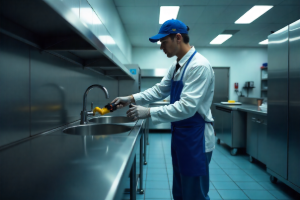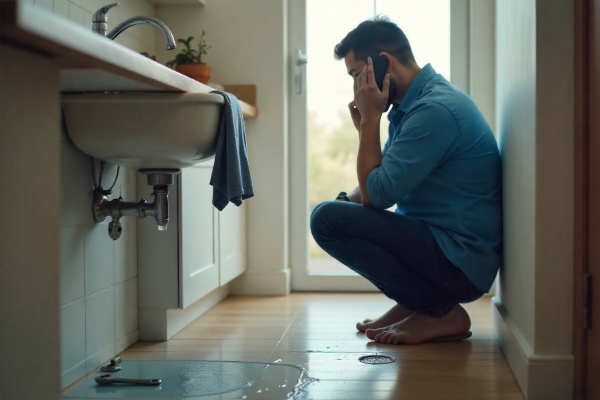A burst pipe under your kitchen sink can quickly go from a minor inconvenience to a full-blown disaster. Whether it’s a sudden flood or a slow leak causing mold and rot, knowing how to respond—and prevent future incidents—can save your home and wallet from serious damage. Here’s your complete guide to dealing with a kitchen sink pipe burst.
What Causes a Kitchen Sink Pipe to Burst?
Understanding the root causes of pipe bursts helps you prevent them in the future.
Frozen Pipes
When temperatures drop, uninsulated pipes can freeze. As water turns to ice, it expands and increases pressure inside the pipe, causing it to crack or burst. Learn how to keep pipes from freezing.
Corrosion and Wear Over Time
Older plumbing systems made of galvanized steel or copper can corrode over time. Corrosion weakens pipe walls until they fail.
High Water Pressure
Water pressure that exceeds 80 psi can stress pipes and joints, especially if they’re already aging or damaged. Over time, the strain can cause ruptures.
Poor Installation or Old Materials
Improper installation, loose fittings, or outdated materials (like PVC or cast iron) may not hold up to daily use and high-pressure demands.
Clogs and Blockages Creating Pressure Build-Up
Grease, food scraps, and debris can clog pipes, causing water to back up and pressure to rise—leading to cracks or bursts.
Signs Your Kitchen Sink Pipe Has Burst
Sudden Water Flooding Under the Sink
If you open your cabinet and see water pooling or spraying, the pipe has likely burst or disconnected.
Water Stains or Mold on Cabinet Walls
Leaking water over time can create stains, warping, or visible mold inside your cabinetry.
Strange Sounds When Using the Faucet
Gurgling, banging, or bubbling sounds can indicate trapped air or a pipe rupture below the surface.
Drop in Water Pressure
If your kitchen faucet suddenly loses pressure or water flow stops altogether, a broken pipe may be leaking water below.
Unpleasant Odors from Cabinet Area
Rotting wood, standing water, and mold can create foul smells coming from under your sink.
Immediate Steps to Take After a Pipe Bursts
Shut Off the Water Supply Immediately
Locate and turn off the under-sink shut-off valve. If that doesn’t work, shut off the home’s main water valve. Here’s a step-by-step shut-off guide.
Disconnect the Garbage Disposal and Appliances
Turn off electricity to avoid electrical hazards, especially if water has reached outlets or cords.
Clean Up Standing Water to Prevent Damage
Use towels, buckets, and a wet/dry vacuum to absorb water and protect your cabinets and flooring.
Call a Licensed Plumber for Emergency Repair
Don’t attempt to fix a burst pipe alone. A licensed plumber can assess the damage and provide a safe, long-term solution. For urgent help, contact our emergency plumbing team.
Repair Options for a Burst Sink Pipe
Temporary Fixes (Rubber Patch, Pipe Tape)
For small cracks or pinholes, you can apply rubber patches or waterproof pipe tape as a temporary measure until professional help arrives.
Pipe Replacement or Resealing
Damaged sections of pipe may need to be cut out and replaced with new materials and properly sealed to prevent future leaks.
Upgrading to Durable Plumbing Materials
Consider upgrading to PEX or copper pipes, which offer greater durability and resistance to temperature changes and corrosion.
How to Prevent Future Kitchen Sink Pipe Bursts
Insulate Pipes in Cold Weather
Use foam pipe insulation on exposed pipes in your kitchen—especially if they’re near exterior walls or in unheated spaces.
Schedule Regular Plumbing Inspections
A yearly plumbing maintenance check can catch early signs of corrosion, leaks, or pressure issues before they escalate.
Avoid Pouring Grease or Food Waste Down the Drain
Grease hardens as it cools, clogging pipes and increasing pressure. Use sink strainers and dispose of grease in sealed containers.
Install a Water Pressure Regulator
A pressure regulator ensures water pressure remains within a safe range, protecting all your home’s plumbing components.




